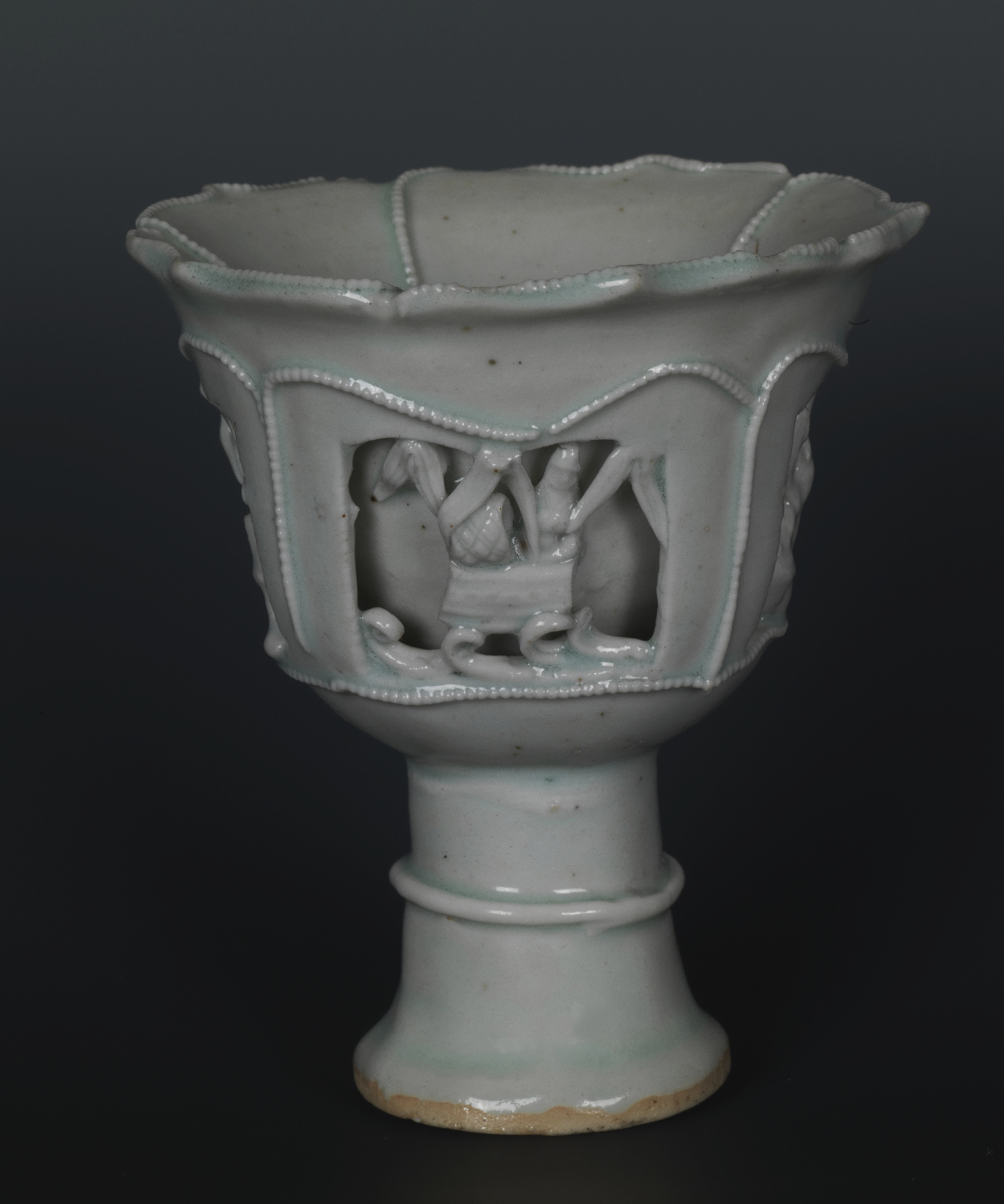
- China, Yuan Dynasty, early 14th century
- Porcelain covered with blue glaze, 'qinbai'
- Inv. 2372
Stem cup
Cup with double walls with four foliate panels where holy personages from the Taoist religion stand out in relief under bamboo leaves, framed by a fine rope of pearls that accentuates the lobed edge and is repeated in the interior. Partially translucid, it is covered with bluish glaze, described by the term qingbai (literally ‘blue-white’) and more recently, yingqing (‘shadow-blue’).
The piece comes from the kilns at Jingdezhen, that with the introduction of underglaze cobalt blue painting became the most outstanding centre for the manufacture of Chinese porcelain, a distinction that it has maintained to the present day.
Henry Brown Esq. collection. Acquired by Calouste Gulbenkian, through M. Knoedler & Co., Ltd, at the sale of the Henry Brown Collection, Sotheby's, London, 25 March 1947 (no. 21).
H. 10; Diam. rim 9.5 cm
Jenyns 1953
Soame Jenyns, Ming Pottery and Porcelain. London: Faber and Faber, Lda., 1953, p. 23, pl. 3A.
New York 1999
Katharine Baetjer and James David Draper (eds.), 'Only the Best'. Masterpieces of the Calouste Gulbenkian Museum, Lisbon, exhibition catalogue. New York: The Metropolitan Museum of Art, 1999, p. 28, cat. 10.
Lisbon 2001
Calouste Gulbenkian Museum. Lisbon: Calouste Gulbenkian Museum, 2001, p. 74, cat. 52.